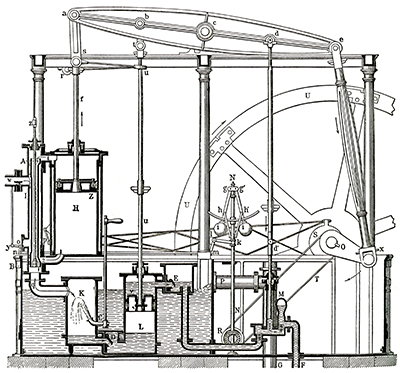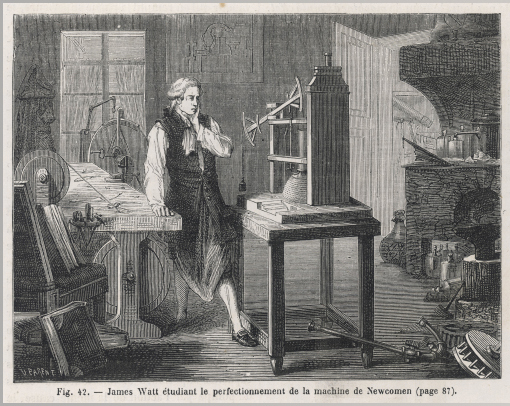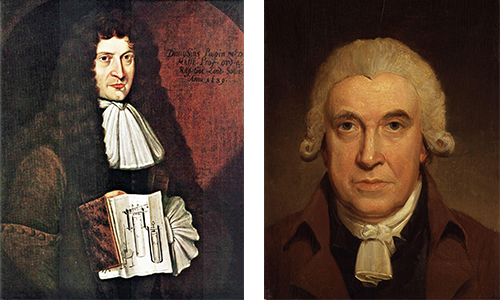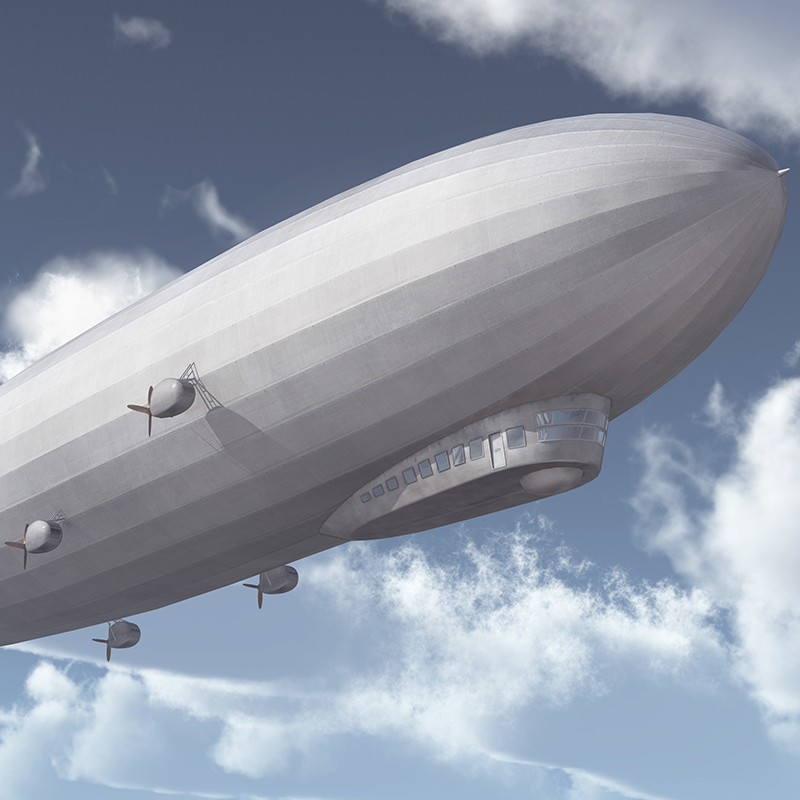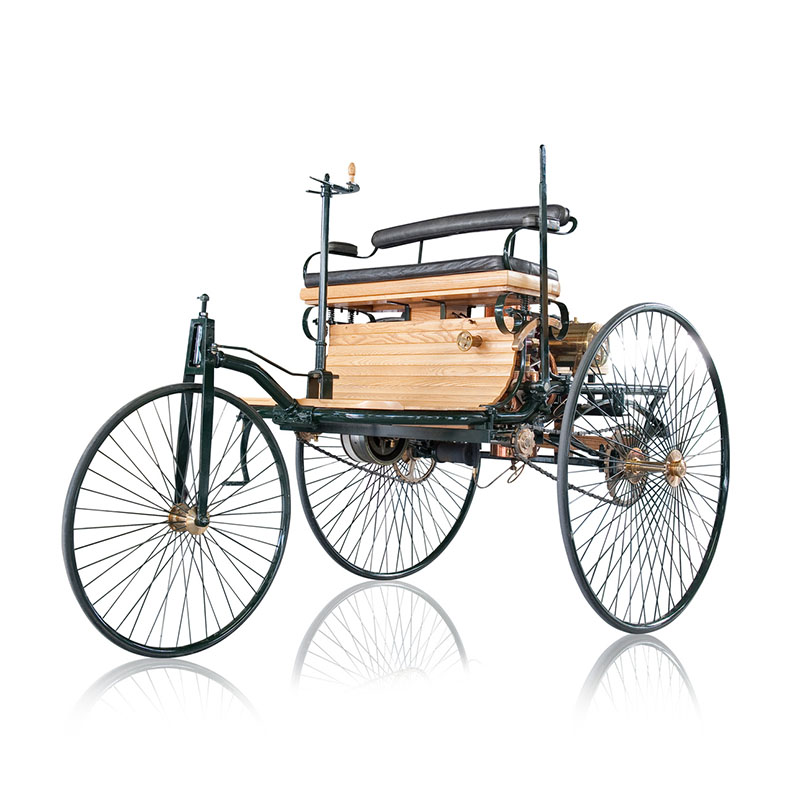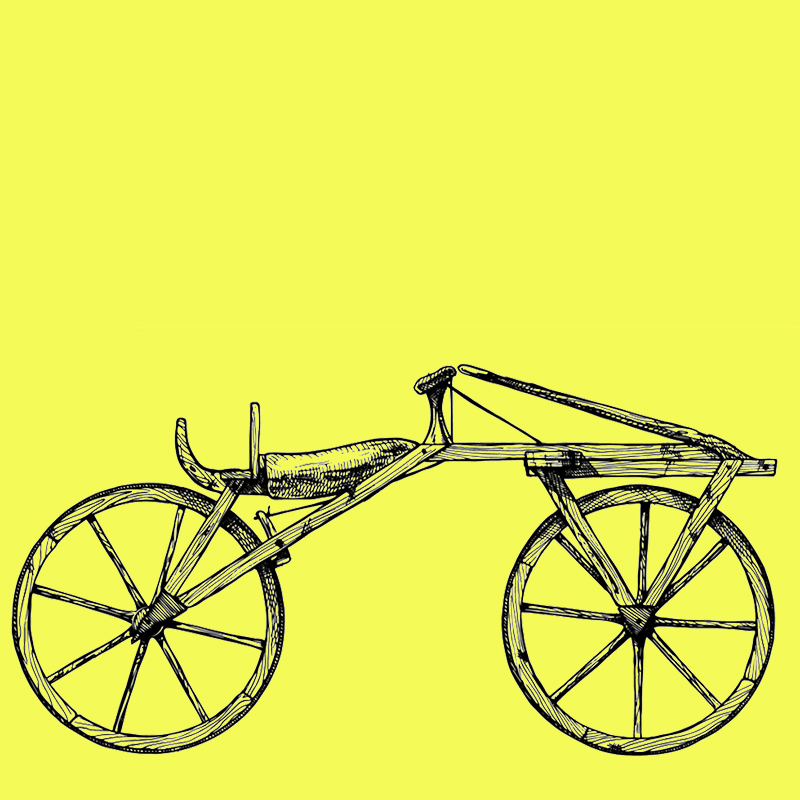It had a slow start: it was almost 50 years before the steam engine would be used in Great Britain to raise water in mines in the early 18th century. The competitive pressure among the inventors was too great. Frenchman Denis Papin had already worked on the technology previously. He was commissioned by Charles, Landgrave of Hesse in the late 17th century to build a water-lifting machine for the fountains in his palace gardens. In his work, he drew on the findings of Dutch physicist Christian Huygens, who experimented with a machine powered by gunpowder. Papin found this too dangerous. Instead, he created the necessary vacuum using water vapor condensation. The difference between the negative pressure created and the external air pressure generated propulsion energy. The atmospheric steam engine was born.
However, the breakthrough was made by English ironmonger and blacksmith Thomas Newcomen in 1712. His principle: he sprayed cold water into a cylinder into which he injected hot steam from below, so that the steam condensed quickly. This created negative pressure in the cavity, which pulled the piston that protruded into the cylinder from above. A rocker arm was attached to this piston, which drove a water pump. As soon as the pressure decreased, the mechanism returned to its original position. Newcomen’s invention brought the English coal industry a huge step forward. However, the overall efficiency of his machine – at almost one percent – was not high enough.
Scotsman James Watt was finally able to increase this efficiency to almost three percent by moving the cooling process out of the cylinder and into a separate condenser. He attached an additional pump, which sucked the air and warm water out of the condenser. This created a negative pressure inside the condenser. The work of Watt’s machine, unlike Newcomen’s, was therefore not carried out by a vacuum, but by the pressure difference existing above and below the cylinder. James Watt was granted patent 913 for his invention in 1769.
For almost two centuries, the steam engine was a crucial driver of the industrial revolution. It was used on rail vehicles, ships, and in factories and played a major role at the beginning of electrification. Today, electric motors and turbines have largely replaced the steam engine.
(Header: tomeyk – Adobe Stock , detail images: Wikipedia, in the public domain)

